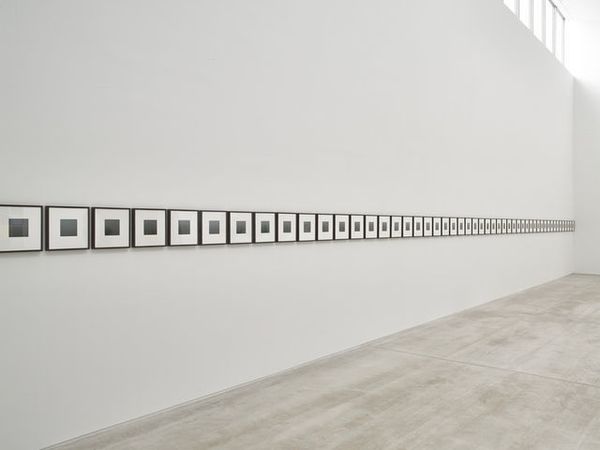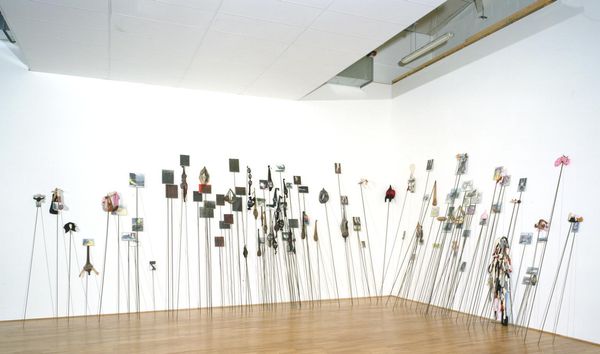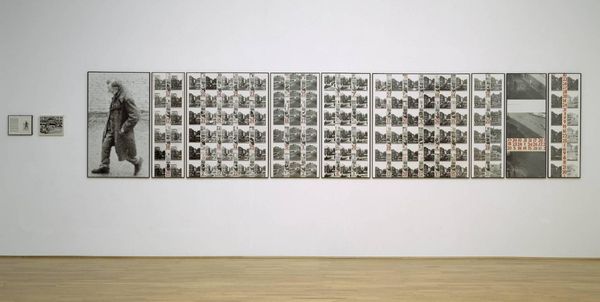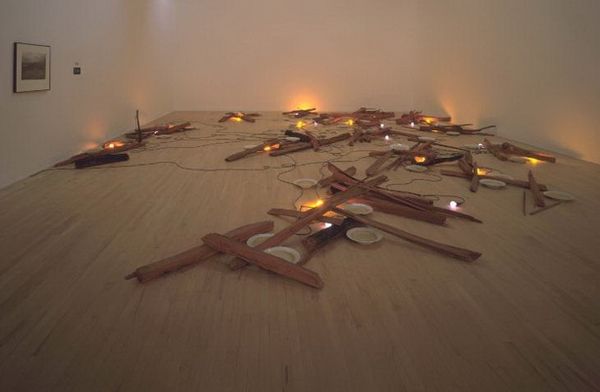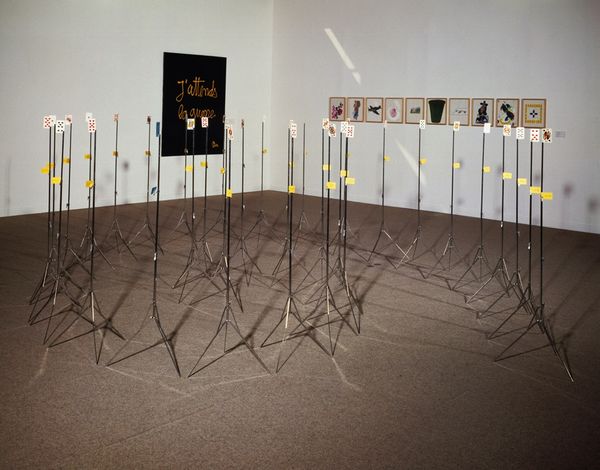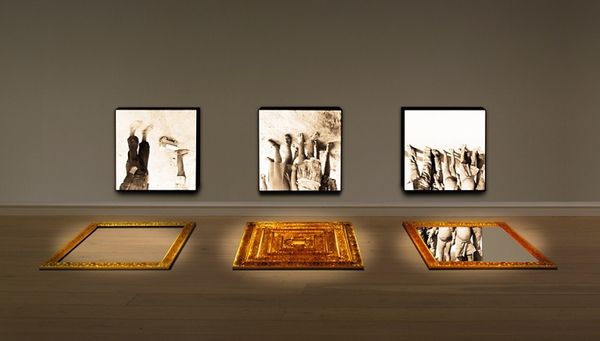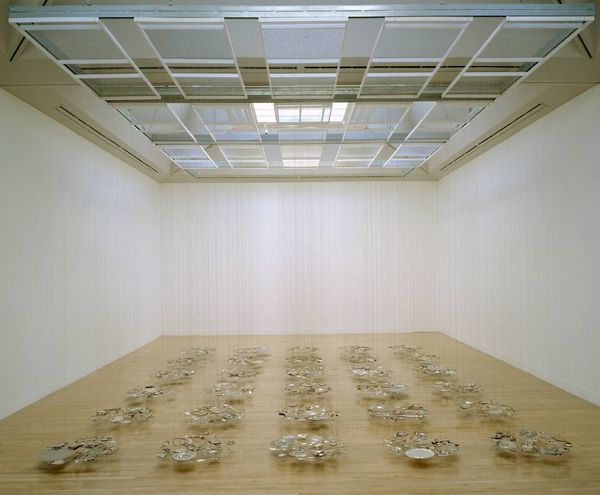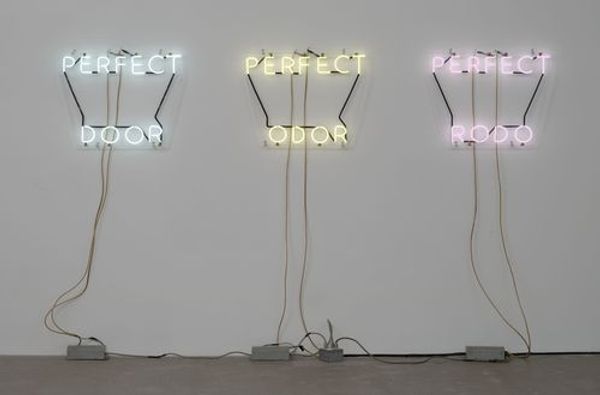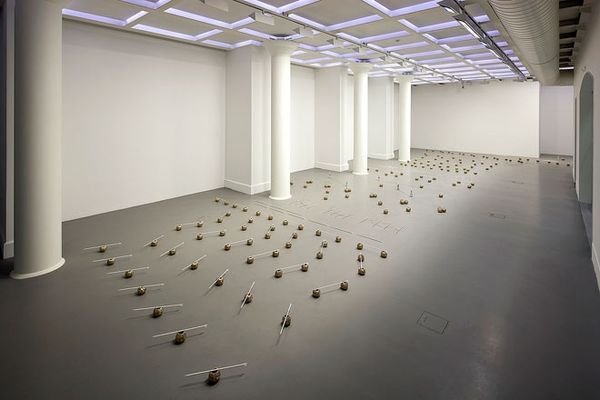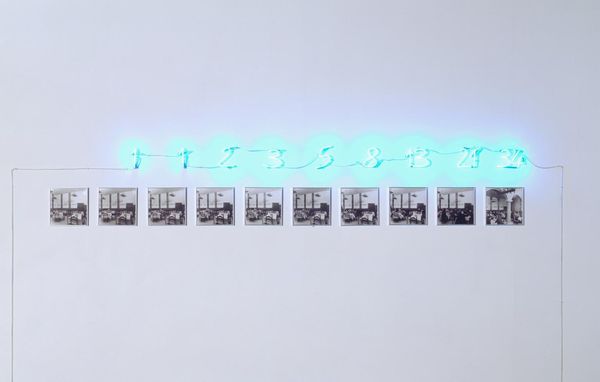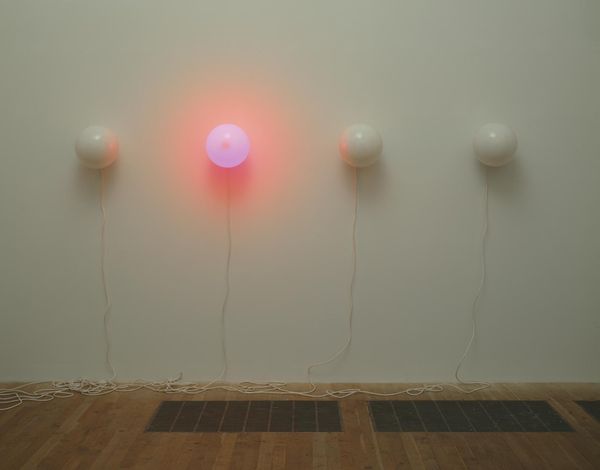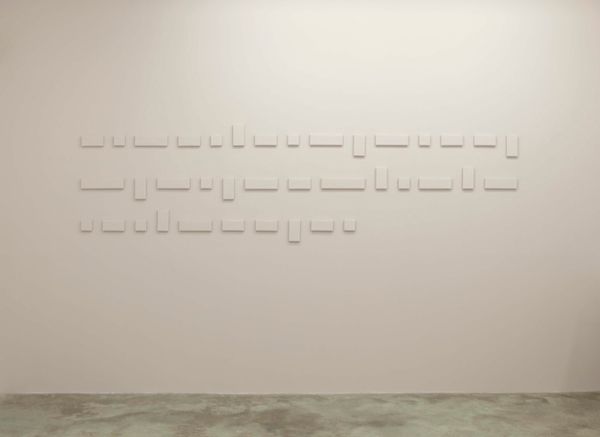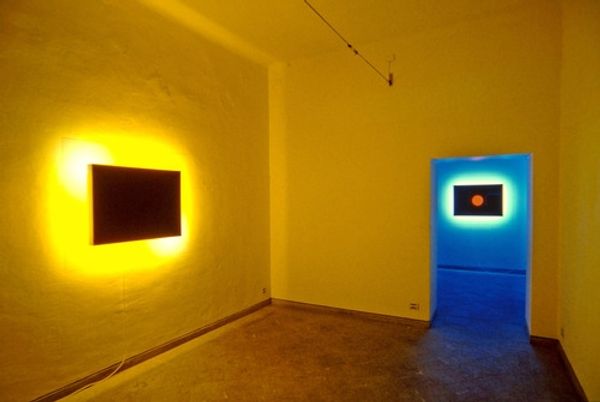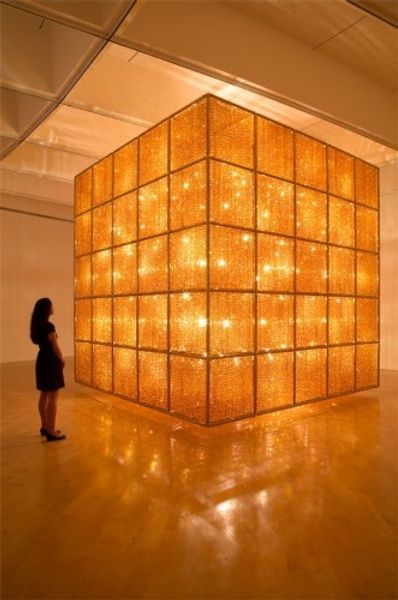
mixed-media, photography, installation-art
#
portrait
#
mixed-media
#
contemporary
#
conceptual-art
#
photography
#
wall hanging
#
installation-art
Copyright: Christian Boltanski,Fair Use
Curator: This is Christian Boltanski's 1990 mixed-media installation, "The Reserve of Dead Swiss." What’s your immediate impression? Editor: Stark. There's something ritualistic about it, like shelves laid out for offerings, each face presented with this unflinching light. A harsh glare almost, from each individual bulb affixed to these monochrome portraits. Curator: Exactly. Boltanski’s works frequently revolve around themes of memory, loss, and the attempt to grasp individual identities within collective historical trauma. The repeated portrait format invokes ideas around collective and personal identity. These lights—almost like votive candles—suggest commemoration or perhaps judgment. Editor: And the method of construction itself—the utilitarian shelving, the simple photographs… the materials used feel incredibly economical, even austere. How did Boltanski make it? What was the source material? Curator: Boltanski appropriated passport photos from a Swiss newspaper. He photocopied them, enlarging the faces. There's something inherently unsettling about this distortion of official portraiture. The faces, while anonymous, become icons. The lightbulbs, of course, are readily available commodities, suggesting how readily individuality can be manufactured and packaged, while still alluding to memory and fleeting life. Editor: Right. They could easily represent how these nameless lives could be anyone's. This contrast, between the mass-produced light bulbs, these repetitive materials, with that hint of uniqueness from the faces beneath. What do you see as its broader conceptual context, its art-historical grounding? Curator: Conceptually, it ties into a rich vein of memorial art. One thinks of reliquaries or ossuaries, but translated through a late 20th century sensibility informed by both the Holocaust and the rise of mass media. Boltanski is dealing with not just historical events but how the visual language of identity—photography, in particular—can be both a record and a distortion. Editor: Looking closer at those connections, this work reminds us how quickly the banality of bureaucracy—passport photos, serial numbers, basic wood framework—can become an agent of violence. It’s hauntingly effective in that respect. Curator: It reframes the very idea of portraiture itself. More than the individual faces, "The Reserve of Dead Swiss" holds up a mirror to our shared vulnerabilities. Editor: An unforgettable convergence of materials and symbol that throws so much into stark relief. Curator: Absolutely, a solemn testament framed by the hum of electric light.
Comments
No comments
Be the first to comment and join the conversation on the ultimate creative platform.
